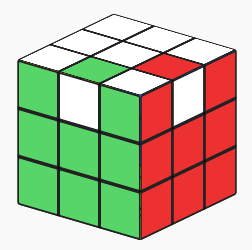

Those patterns accessible from the basic cube correspond to the Standard Model of particle physics. Particle physics is governed by strict rules that parallel those of the Rubik's cube. Let me know if you are interested! Math Bear ^.,^īut that is exactly the idea! I have no interest at all in solving the cube, I am exploring pattern symmetries. I am especially interested in anyone willing to look for the rarer patterns in the Magnetic Monopole andG.U.T.

I keep finding more and more things about Rubik's cube patterns and I would appreciate it if somebody would be interested in assisting in the work of discovery. The Rubik's New Cube is not designed to be disassembled and is not really useful for this purpouse. The speed cubes seem to be the ones you can do this with. It is also nice if you can pry off the center facelets and exchange opposite ones to creeate mirrored patterns.

I use the Rubik's Speed Cube, in fact about 6 different ones so I can study different symmetry versions of the same basic pattern side by side, You should be able to disassemble the cube and reassemble it into a different orbit. It is best if you use one of the speed type cubes. The reason's behind this are what I am investigating, It might surprise you to know that there are 28 other possible checkerboard patterns (counting color permutations) on a given Rubik's cube falling into 5 different symmetry families. I have met few people who know any others than this one. If this seems simple, consider the 6-way checkerboard pattern that everybody knows, you just need 3 half slice moves to make it and it has reflection symmetry on all 3 axes through the centers. What kind of particle depends on the symmetry of how the colors are exchanged and the kind of orbit the cube must be in for that pattern. Basically, I identify a symmetrical pattern on the Rubik's cube as being equivalent to a subatomic particle. My discoveries are best understood by comparing the different families of particles that theoretical ophysicists have come up with or hypothesized may exist. I have found many more ccorrespondences than this and indeed I am acquiring a deep understanding of the often subtle and complicated ways seemingly simple Rubik's patterns relate to each other. So far, nobody has pursued this as far as I can tell. It was long ago noted that the ways you can twist corners on a Rubik's cube closely paralleled the ways you can construct particles with quarks. I have been investigating different kinds of Rubik's Cube patterns and their symmetry families for the last couple of years and I have discovered a great deal of information that I have seen nowhere else.


 0 kommentar(er)
0 kommentar(er)
